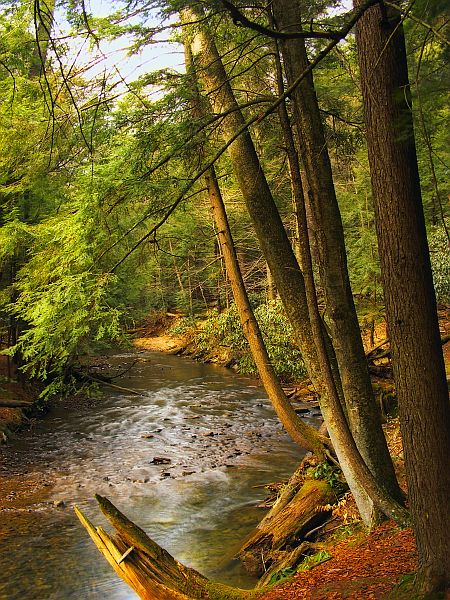As I mentioned two weeks ago, a Pennsylvania hemlock project needs volunteers to report hemlock woolly adelgid in the Allegheny High Plateau so that the trees can be protected against this deadly pest.
Many of us want to help because we love the hemlock’s beauty, but for some birds the trees are more than beautiful, they’re essential.
At the project kickoff seminar Dale Luthringer told us about hemlocks and their link to birds.
Eastern hemlocks are the most shade tolerant tree in the U.S. and can thrive in pure stands or in damp areas of deciduous forests. Wherever hemlocks grow their dense evergreen canopy creates a cool, shady habitat that’s used by 90 species of birds.
Studies have shown that six species depend so much on hemlocks that they decline when the woolly adelgid kills the trees. Here are the six who go missing:



and… (4) hermit thrushes, (5) blue headed vireos and (6) Acadian flycatchers decline where the woolly adelgid takes its toll.
With hemlocks covering 19 million acres in the eastern U.S., we’ll lose a lot of habitat — and birds — if we do nothing to combat the hemlock woolly adelgid.
Read more here on how you can help the Allegheny High Plateau adelgid project. (See where on this map — from Cooks Forest northward to NY).
(photos:
Eastern hemlocks shading Tom’s Run in Cook Forest by Nicholas Tonelli, via Wikimedia Commons, Creative Commons license. Click on the image to see the original.
Black-throated green warbler by Steve Gosser
Blackburnian warbler by Chuck Tague
Ovenbird by Marcy Cunkelman)
p.s. Magnolia warblers are also affected. They’re 45 times more likely to be found in old growth hemlock forests than in stands of younger trees.

I noticed that when I was participating in the second Pa Breeding Bird Atlas that I found Magnolia Warblers almost exclusively in hemlock forests during the nesting season, so they would also suffer.